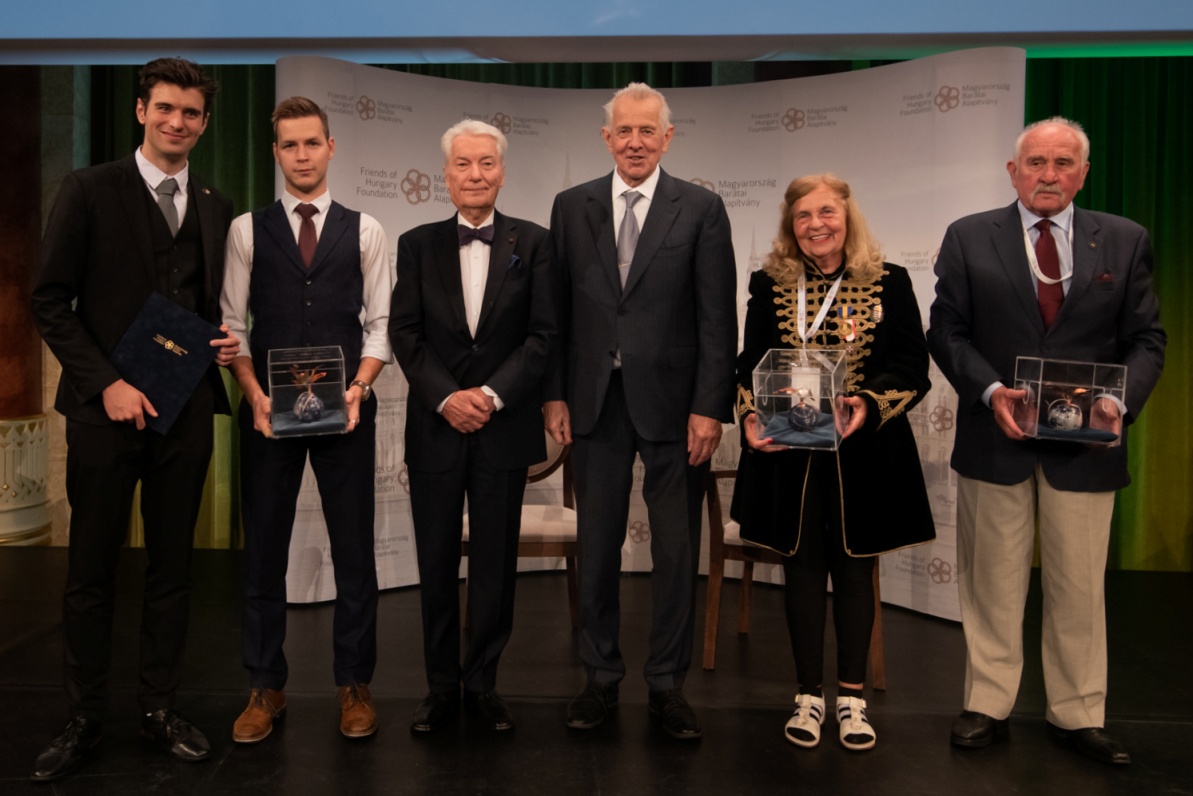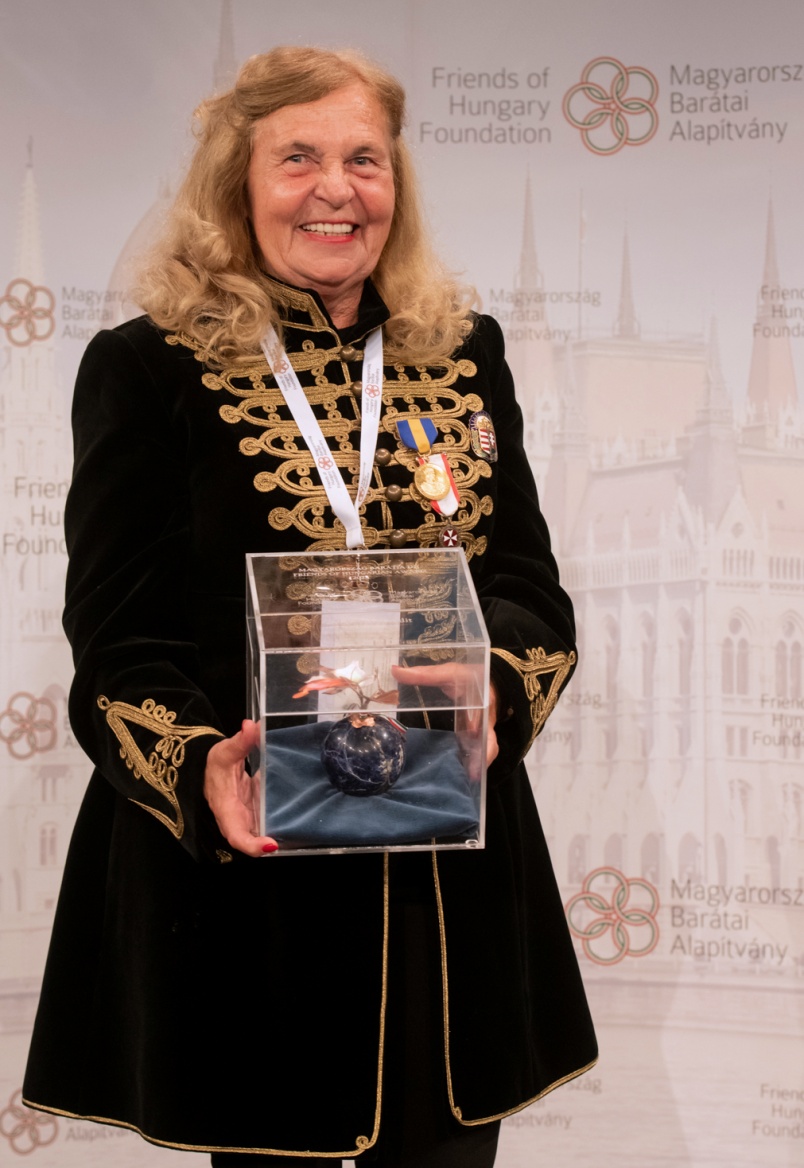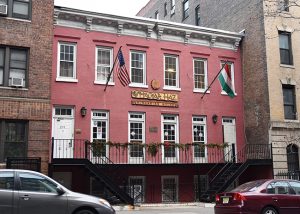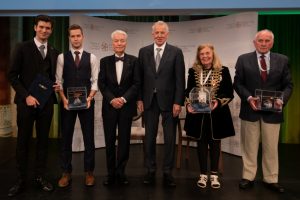
The prize is awarded annually to members of the Hungarian global diaspora or to those working to enhance Hungary's reputation.Continue reading

Dr. Judit Kerekes, mathematician and educator, chaired the Department of Mathematics at the City University of New York College of Staten Island for 15 years. She organized several conferences and provided opportunities for Hungarian scientists and professors to present themselves in the United States.
In addition to her academic work, she has always been active in the Hungarian American community: general secretary of the American Hungarian Federation, trustee of the Americans for Hungarians Foundation, founder and co-chair of the Hungarian American Schools Meeting, and member of the Diaspora Council. We met with Dr. Kerekes in Budapest on the occasion of her being honored by the Friends of Hungary Foundation annual award.
How did you come in contact with the Friends of Hungary Foundation, publishers of our news portal, Hungary Today?
I am a founding member, so I have been involved from the beginning. I think that wherever I am in the world, I have roots. And the only way to have leaves is to water the roots. This means that our Hungarianness must be nurtured. How? By being with the third and fourth generation of Hungarians who are being taught Hungarian. In America, we have 33 Hungarian schools in 22 states.
Who does “us” mean?
There is an organization in America called AMIT, American Hungarian Schools Association, of which I am the founding president. Before that, I started as a teacher at the Arany János Hungarian School in New York. Later I was assistant principal and advisor in other schools. Then I was elected president of all Hungarian schools in America and Canada for two terms. Soon after, we founded MITE, the Hungarian School Teachers’ Association. And 10 years ago we established AMIT because teachers were not getting professional development. They come here with a Hungarian diploma, they are expected to teach several lessons back and forth on Saturdays, for example, they are expected to prepare on Fridays and to give feedback to parents during the week. So they needed something that we could give them too.

Photo: Hungarianhouse.org
On October 15 we will have our 10th AMIT conference. We invite the most renowned teachers and child psychologists from both Hungary and America to help us with how to educate adolescent children. By the way, how to deal with a problematic adolescent child can be solved in many ways. Of course, it can be done by putting them together with other children who are not troubled and bringing them down a level. Or by dealing with problem children and gifted children separately. In America, for example, they do it by having two teachers in most classes. One of them teaches the subjects and the other one provides the special education.
It is becoming a bit of a taboo subject, especially in the United States, to give extra attention to gifted children, rather than giving that extra attention to disadvantaged children who are struggling.
Perhaps I have not worded that correctly, because I am talking about the children who are struggling. Whether they are brilliant but cannot concentrate or find it difficult to understand what is being taught. That is why it is better to have two teachers in the classroom rather than one. One teacher teaches the different subjects and the other teacher pays attention to these children. This is a double help for disadvantaged children.
Even though you are a US resident, you are still working in the enchantment of Hungary. How does this work in practice?
The answer is very simple. There is this Erasmus+ program that allows students to go overseas. It is a way of sending an American child to Hungary for a semester and sending a Hungarian child to America for a semester. We take care of the accreditation, so the child has no problem with that, and they do not have to pay tuition fees. We also help the child in the program to get into the right course for their level.
One of the American kids I sent to Hungary once came back as a kind of “ambassador of Hungary,” he liked the country so much, he had so many good things to say. For example, he was happy to talk about how much they helped him with his maths, because he was struggling with it. They managed to get him to a high level and when he came back to America he was a good student.
Will the exclusion of Hungary from Erasmus+ not be a problem?
We have to get it back working. And that is a matter for politicians.
And until then, what happens?
In the meantime, we need to work on which university can establish a relationship with the other. We are not only working on a student exchange program, but also on a professor exchange program. Every year, Hungarian professors come to my house, they stay with me and I organize for them to give a university lecture. In New York City, I am talking about the University of New York. And my partner in Hungary is the Eötvös Lóránt University of Budapest. I invite professors from there to give a total of eight lectures in America.
Could it be an aspect of this that we are consciously cultivating Hungary’s image in this way, and that beneficiaries of their teaching, American students, colleagues, see the fruits of Hungarian science rather than just the dry scientific points?
Yes! As a professor, you can come back with a plus that does not just mean that you can put on your CV that you gave eight lectures at a foreign university. You can leave knowing that you have improved during that time; you have given and you have received. Now, if there is Erasmus+, let us do it with that. If not, we do it like this.
Is there a downside to Hungarian teachers coming to the American cultural and academic context? Because Hungary has a somewhat tarnished image at the moment, there is a lot of anti-Hungarian propaganda in the United States. Does this social context not distract attention from their talent and their knowledge?
We just had the World Athletics Championships in Hungary. Until then the world press was full of negative things about us. During the World Championships, my colleagues brought positive news one after another. So, first of all, we have to do something that will improve our image. Secondly, I would say that the teaching of mathematics in Hungary is on a higher level than in many other countries, including America. So the knowledge of professors that I invite from Hungary to lecture is often higher than that of American professors.
What is the experience of American professors returning from Hungary?
Each country has something good. You have to look for the good. And what is good in America? What is good in America is that children have self-confidence. So they are convinced that the knowledge they have is very good. They take that confidence-building home to Hungary. Add that confidence to high maths knowledge and you have got Hungarian prospective teachers ahead of the game.
The point of teaching, by the way, is not to teach rules, but to build up the rules- the student has to figure it out. To do this, a professor must know not just one method, but many. It is our job as professors to be able to follow the thinking of future teachers. Also, we do not tell them the right solution, we ask questions so that they can figure it out and have a sense of achievement. I ask the same of the prospective teachers, they have to mediate an experience of success in their own classrooms.
In order for someone to learn mathematics, their interest and love of mathematics has to be stimulated in some way. You have decades of experience. What is it that you do to get people hooked?
The taste of Success. I give them a task that is not over their heads, nor is it too easy. If it is easy, they will find it boring, and if it is way over their heads, they cannot do anything with it. You have to find a task that is a challenge, but an achievable challenge. The experience of success should not be stolen from students, nor should they be told the solution. However, I can ask questions – and this is what teachers have to be very good at – and extract the solution from them. Because if they realize that they have solved the maths problem today, they will do it again tomorrow. If they are left with the experience that they cannot do it anyway, they will not even pick up the book the next day.
Why is mathematics so unpopular with children? Is it because it is difficult?
It is difficult. But that is only the least of it. The bigger problem is that it builds on each other. That means building up from the level the child is at, not starting down from where I am as an adult.
You live in two countries, America and Hungary, at the same time. Can one have two countries? Can one love two countries?
– As a professor, I publish and lecture in many countries, so I meet a wide range of people. Not only do I have two languages, but my dual culture allows me to think in two different ways. I was born in Hungary and I consider myself Hungarian. However, where I have achieved my professional success – through very hard work – is America.

Photo: Hungary Today
Is there anything else you would like to tell us about?
The way I work in my office is that the office door is usually open. If students do not understand something or have any other problems, they can always come in and tell me. One day, a past student of mine, who graduated about 20 years ago, knocked on the door. She told me that she had always hated maths, and that I was the only one who had made her love it. She has since become a high school maths teacher. However, she has a problem. Her daughter hates maths, so she asked me to take care of it. This former student’s daughter has now become such a successful high school math teacher, she presented with me at an NCPN conference.
And how did you achieve that?
We worked very hard. She was an open-minded child who was willing to learn. I just offer the opportunity, and an open mind can go a long way.
Featured Photo: Hungary Today